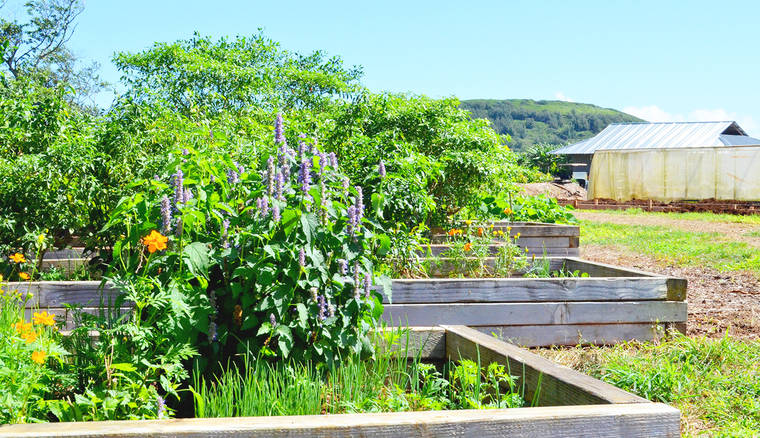KILAUEA — They’re looking at a new take on wastewater treatment at the Kilauea Community Agricultural Center, one that would convert sewage into energy for running electric cars.
Scheduled for completion in August 2020, the wastewater system is called the Microbial Electrolytic Cell System.
From sewage and other organic waste, MEC generates pure hydrogen gas to power hydrogen fuel-cell vehicles. That can also be easily converted to electricity to power electric cars, while disposing of thousands of gallons of waste.
The system will allow KCAC to realize the vision of providing food to schools, hospitals and the local community, and will also provide a new approach to waste management for Kilauea.
It’ll also provide a new source of energy, as well as fertilizer, soil amendments and treated water.
“Energy, food and economic sovereignty is the future we envision for Kauai,” said Yoshito L’Hote, CEO of ‘Aina Ho‘okupu O Kilauea, which facilitates KCAC.
He continued: “In our effort to increase our food and energy independence, we are looking at innovation and modern technology use through indigenous values and ancestral wisdom to face the new challenges we face now and tomorrow.”
AKH signed a memorandum of understanding with creators of the MEC, GELF Sciences, on July 10.
“We have put together a world-renowned team of expert scientists and engineers with county and community leaders to assist in the development of this project,” said Brett Danson, CEO of GELF Sciences.
Basically the MEC is a bio-electrochemical system that provides a carbon-dioxide-free fuel, simultaneously reducing methane-producing waste streams and protecting the environment from infectious waste streams by purifying the water.
It can accept waste from sources like hog farms, food manufacturers, restaurants, fishermen, pig hunters, slaughterhouses and septic trucks.
It uses multiple elements that work together to repurpose 100 percent of the waste into nutritional supplements, fertilizer, soil amendments, treated water and hydrogen gas.
“The MEC system rearranges the molecules in organic waste to generate power and form valuable products using nature’s own tools,” AHK representatives said.
“This project will help protect the rivers and beaches on Kauai from pollution caused by septic runoff.”
It’ll also help redirect some of the waste stream on Kauai.
“GELF Sciences is excited to work with ‘Aina Ho‘okupu O Kilauea to solve long-standing waste issues across the Hawaiian Islands, starting in Kilauea,” Danson said.
“The amount of cooperation and positive input from the community and county is unprecedented.”
Wellspring Impact Group, a collection of entrepreneurs and investors, is also on board with the project.
Danson and the collection of scientists at GELF Sciences are in the business of designing systems to curb climate change and clean up pollution.
The MEC system was designed specifically for KCAC.
“We are truly thankful to be able to fulfill our kuleana of a pollution-free world right here on Kauai,” Danson said.
•••
Jessica Else, environment reporter, can be reached at 245-0452 or jelse@thegardenisland.com.


